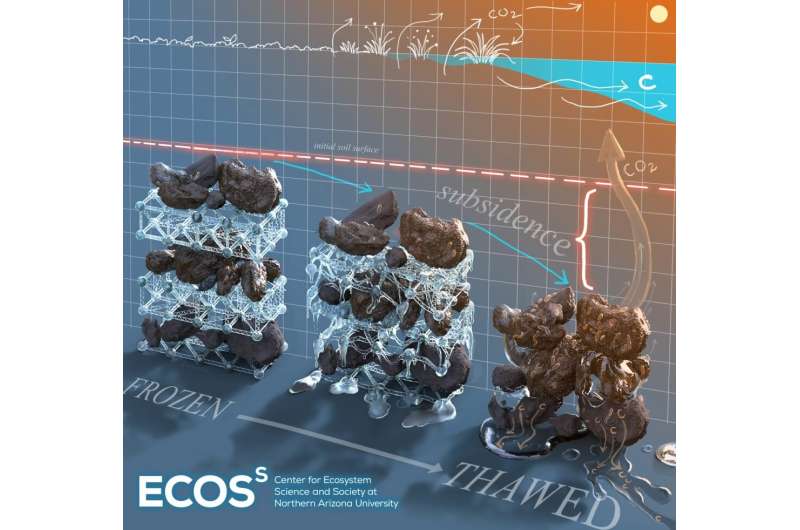Scientists find carbon from thawing permafrost is released into the atmosphere at higher rates than previously thought

For years, scientists have pointed to warming permafrost in the Arctic tundra as a source for increased carbon in the atmosphere; as this soil warms, it releases greenhouse gases that have long been trapped in frozen ground.
New research from Northern Arizona University shows even more carbon is being released from thawed permafrost than climate scientists previously thought. César Plaza, Christina Schädel and Ted Schuur, professors in the Center for Ecosystem Science and Society (Ecoss), authored a paper published this month in Nature Geoscience that introduces a new way to track soil carbon in permafrost, which changes their understanding of how environmental change influences ecosystem carbon storage. The experiment builds on a long-term permafrost tundra warming study Schuur and other collaborators are doing in Alaska.
"This study was novel because we used new methods to directly track the soil carbon losses, and they were much higher than we previously thought," Schuur said. "This suggests that not only is carbon being lost through greenhouse gases directly to the atmosphere but also dissolved in waters that flow through the soil and likely carried carbon into streams, leaves and rivers."
This study quantifies soil carbon in relation to a fixed ash content, which uses the mineral component of soil as a metric for pool comparisons over time, which enabled the team to get direct measurements of changes in soil carbon. They used this approach to directly measure soil carbon pool changes in a five-year period, showing an annual loss of more than 5 percent of soil carbon.
As almost a third of the Earth's surface soil carbon is trapped in the permafrost, this indicates greater ramifications not only in the present, but also as the world copes with climate change in the near future. Scientists who study the permafrost see a cycle: higher temperatures lead to more of the permafrost thawing, which leads to the release of soil carbon into the atmosphere, which leads to higher temperatures, which leads to permafrost thaw, and so on.
According to the study, 5 to 15 percent of the soil carbon held in the permafrost could be released into the atmosphere by the end of the century, using the current scenario. The modeling exercise the research team used to compare agreed with the observations but suggests that the loss rate could be twofold or more higher.
"Our results demonstrate the potential for repeated measurements that quantify changes in soil carbon across the entire permafrost region to better understand its environmental fate," the study reads. "An effort such as this is a critical and currently overlooked link to determine the magnitude of the terrestrial permafrost carbon to climate change."
Connecting all the pieces to climate change will be an important factor as global society attempts to combat its effects, Schuur said.
"This is critical because carbon lost from these ecosystems ends up in the atmosphere and can accelerate climate change," he said.
More information: César Plaza et al. Direct observation of permafrost degradation and rapid soil carbon loss in tundra, Nature Geoscience (2019). DOI: 10.1038/s41561-019-0387-6
Journal information: Nature Geoscience
Provided by Northern Arizona University





















